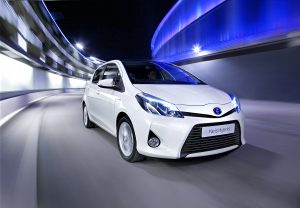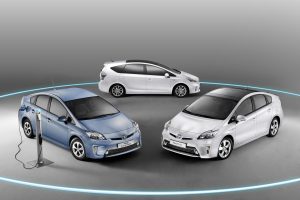Toyota At The Heart Of Hybrid’s Rising Fortunes
More than 75 per cent of UK sales claimed by Toyota and Lexus models
The days when hybrid could be dismissed as a passing technical novelty are well and truly past: figures from the Society of Motor Manufacturers and Traders chart a steady rise in annual UK sales over the past five years, with Toyota and Lexus models accounting for more than 75 per cent of all hybrids taking to the road.
From 2007 up to the end of the first quarter of this year, almost 100,000 hybrid vehicles have been sold in theUK, helping achieve a healthy saving in carbon emissions. Of that number, 77,000 were Toyota or Lexus cars – a proportion of more than three in every four hybrids registered. In terms of hybrid’s market share, the figures have almost doubled, from 0.7 per cent to 1.3 per cent so far in 2012.
This year should see further impetus for even more drivers to make the switch, with four new hybrids being introduced by Toyota and Lexus. Toyota is bringing hybrid technology deeper into the core of its product range with the introduction of Yaris Hybrid this summer. It has comprehensively downsized its Hybrid Synergy Drive system to work within a supermini architecture, promising a class-best combination of emissions and efficiency without reducing the amount of space on board or in the boot.
At other end of the size scale, the summer will also mark the debut of Prius+, the first seven-seat full hybrid in Europe. By using compact and powerful lithium-ion battery technology, Toyotahas been able to give Prius+ a spacious and fully flexible interior. The new range will also deliver CO2 emissions starting at less than 100g/km, earning road tax (VED) andLondon congestion charge exemption.
The development of Prius – the “original” Toyota hybrid – into a self-contained family of models will further bring the introduction of Prius Plug-in, Toyota’s first commercial hybrid with a battery that can be recharged from an external power source. Designed principally to meet the demands of urban drivers with its extended electric-only EV range (with zero tailpipe emissions), the plug-in hybrid goes further than all-electric models by being able to switch seamlessly to its hybrid system once battery charge is depleted. That means no worries for the driver about not being able to reach their destination, and the bonus of a much quicker battery recharge time, connected to a home or workplace power supply, or a roadside charge point, in around 90 minutes.
Hybrid’s role in the luxury market will be reinforced by the introduction of the new GS executive sports saloon. The full hybrid GS 450h will take emissions and fuel efficiency to a new low level in its class, while also blazing a trail for a sharper and more distinctive new Lexus design language.
Jon Williams, Toyota President and Managing Director said : “The SMMT data show how the momentum for hybrid is increasing. Motorists appreciate its environmental performance, its reliability and ease of use, plus the smooth and refined driving quality.
“Toyota’s leadership in hybrid technology is not just about the models we have launched and the new vehicles we are bringing to market this year. It also serves as a proven, flexible technology platform for creating different power trains – all-electric, plug-in hybrid and fuel cell vehicles – with which we will be able to develop and deliver sustainable transport with minimum environmental impact.”
ENDS




